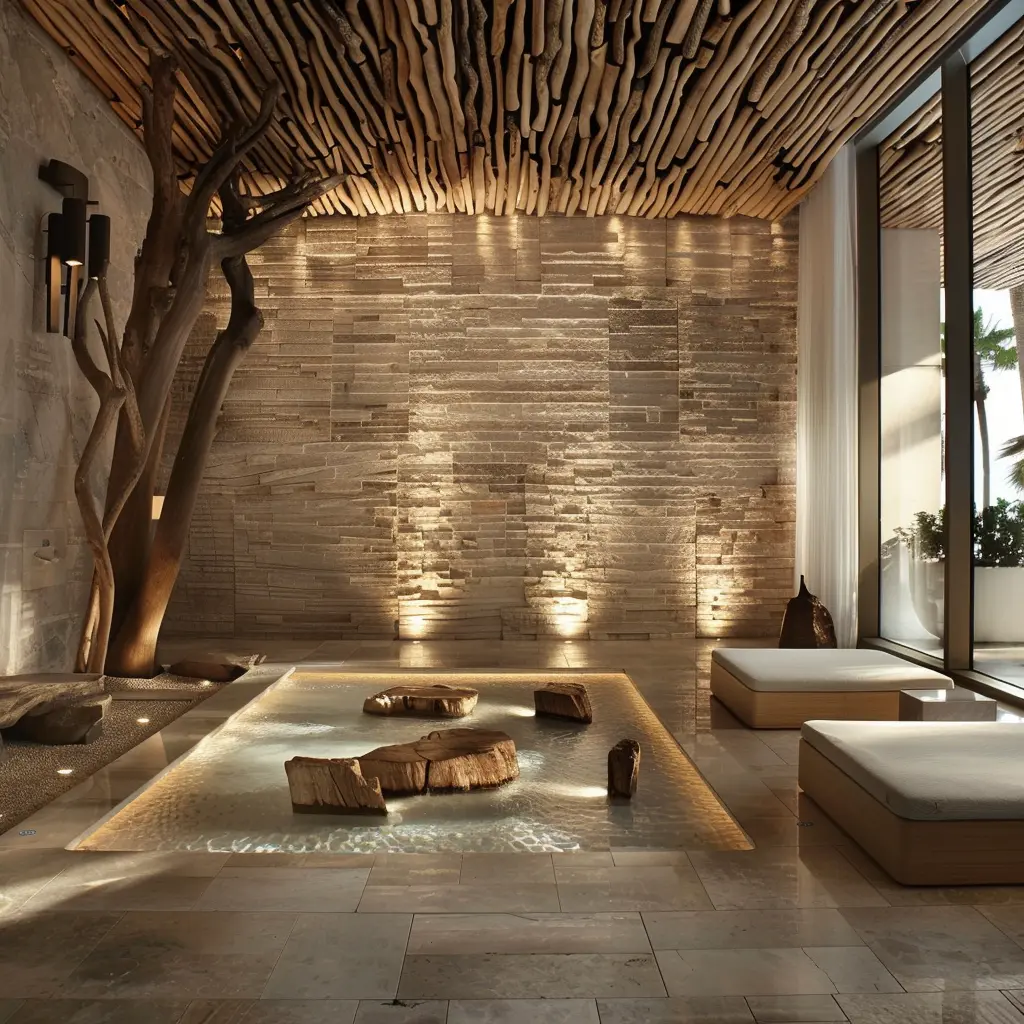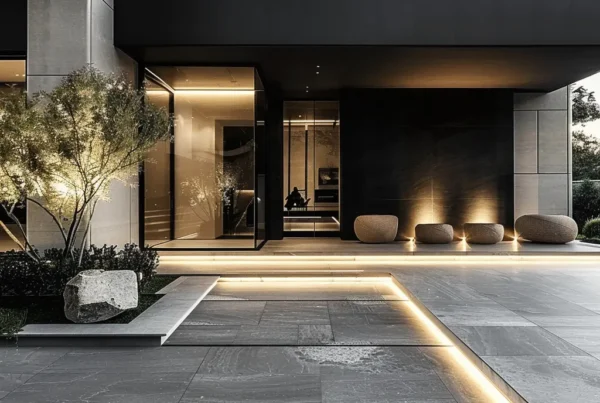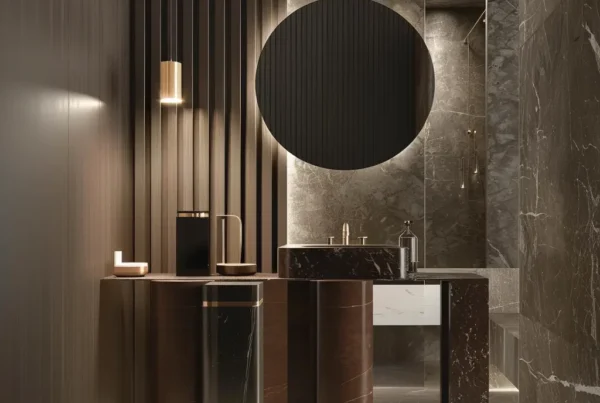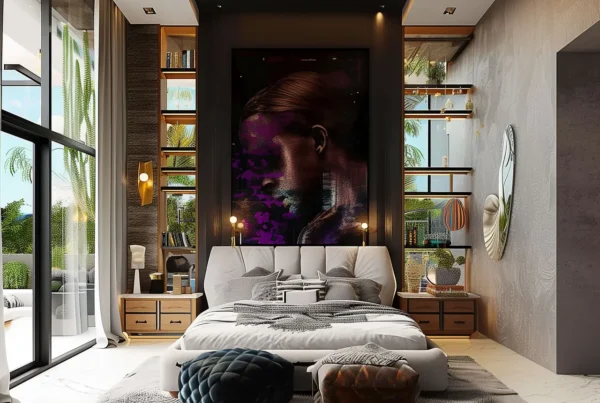Miami’s vibrant culture is reflected in its commercial spaces, where dynamic interior design plays a crucial role in creating inviting and functional environments. In this blog, we’ll explore how innovative design can transform workplaces, retail spaces, and restaurants into dynamic hubs that attract customers and inspire employees.
Understanding Dynamic Interior Design
Dynamic interior design is an approach that focuses on creating adaptable and flexible environments. It involves the use of innovative materials, textures, and lighting to create spaces that can change with the needs of users.
This concept goes beyond mere aesthetics. Think about how a space can reflect the brand’s identity while also servicing the practical needs of employees and clients. The balance of form and function is key, and it can only be achieved through a thorough understanding of how people interact with their environments.
The beauty of dynamic interior design lies in its ability to adapt. For instance, office spaces are no longer just cubicles; they are versatile areas that can be reconfigured for collaboration, focus, or relaxation. This adaptability not only enhances productivity but also enhances employee satisfaction, creating a workspace they love.
Moreover, with the rise of remote work, businesses have begun to rethink their spatial needs. Dynamic design addresses these transformations by providing multifunctional spaces that meet diverse roles, making the office environment more appealing for current and future employees.
Case Studies: Successful Transformations in Miami
We will examine several examples of Miami businesses that have successfully implemented dynamic interior designs. From collaborative workspaces to vibrant retail environments, these case studies showcase the power of design to improve functionality and appeal.
For example, one well-known co-working space in the heart of Miami embodies the essence of dynamic interior design. With movable walls and flexible seating arrangements, the space can host events ranging from networking mixers to intensive workshops, catering to the varied needs of its members.
Another compelling case is a popular restaurant that has transformed its interior in a way that enhances the dining experience. By utilizing retractable windows, the establishment blends indoor and outdoor spaces, allowing natural light to flow in, which not only boosts ambiance but also encourages patrons to linger.
These transformations aren’t just about looks; they significantly impact business performance. Increased foot traffic in retail spaces, for example, can often be traceable to how inviting the environment is made through strategic design choices. In Miami, where competition is fierce, these transformations are essential for standing out.
The Role of Color and Light in Commercial Spaces
Color and light play pivotal roles in interior design. In this section, we will discuss how specific color palettes and effective lighting solutions can enhance mood, motivate employees, and attract customers in Miami’s commercial settings.
Research has shown that specific colors can influence our emotions and behaviors. For instance, blue hues can create a calming effect, making them ideal for offices aimed at productivity, while warmer tones like red and orange can stimulate energy — perfect for restaurants looking to encourage appetite.
Lighting, too, should never be an afterthought. The right lighting can significantly alter the perception of a space. In Miami, where the sun shines bright, maximizing natural light is crucial. Spaces designed with ample daylight exposure not only feel more open but also boost the overall mood of occupants.
Moreover, using dimmable fixtures and strategically placed lamps allows for tailored atmospheres. A well-lit workspace during the day might transform into a softer, intimate setting for evening events, showcasing the versatility that dynamic interior design offers.
Sustainability in Dynamic Interior Design
Sustainability is increasingly important in design today. This section will explore sustainable practices within dynamic interior design, highlighting how businesses in Miami can create eco-friendly spaces that also look stunning.
Incorporating sustainable materials such as reclaimed wood and recycled metal not only reduces environmental impact but also adds unique character to spaces. These materials tell a story, connecting the space with its surroundings and fostering a sense of community.
Furthermore, energy-efficient fixtures and smart technology can be integrated to minimize waste and reduce utility costs. Imagine a dynamic workspace that adjusts its lighting based on occupancy, maximizing efficiency while maintaining a welcoming environment.
As Miami embraces a greener future, businesses that prioritize sustainability will not only contribute to a healthier planet but also resonate with environmentally-conscious consumers. The appeal of eco-friendliness never goes out of style.
Future Trends in Miami’s Interior Design Landscape
As Miami continues to grow, new trends will emerge in dynamic interior design. In this section, we’ll look at what the future holds for commercial spaces, from technology integration to evolving customer preferences.
One major trend is the integration of smart technology. Imagine a commercial space where the environment can adapt at a moment’s notice — lighting that adjusts based on the time of day, heating or cooling systems that respond to occupancy, all enhancing comfort and efficiency.
Another key aspect involves wellness-focused design. Spaces that incorporate biophilic elements, like indoor plants and natural materials, cater to increasing demand from consumers and employees for environments that support health and well-being.
Finally, as remote work becomes a standard, design will increasingly focus on creating hybrid spaces. These will cater to both in-office employees and those working from home, allowing for seamless transitions between different modes of work.
Embracing Change Through Design
Dynamic interior design is more than just aesthetics; it’s about enhancing functionality and creating memorable experiences. As Miami continues to evolve, so will the spaces within it, driven by creativity and design thinking.




